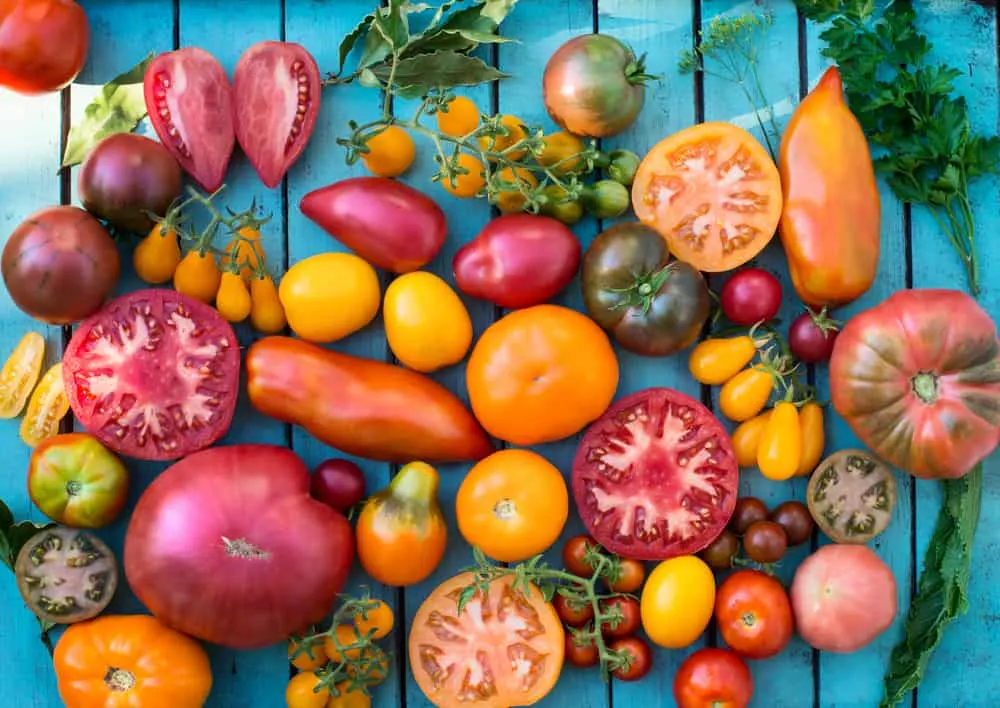
The foundations of a great tomato begin with the variety. But when there are so many varieties to choose from, where do you start? How do you know which variety will produce your best tomato?
Unfortunately, I can’t give you an exact answer. But I can attempt to narrow down your choices by answering one question…
Hybrid or heirloom?
There is some confusion surrounding these two terms and what their implications are for your tomato garden. Let’s demystify the terms and look at the pros and cons. At the end of the journey, you should have come closer (only slightly, but still closer) to deciding on your ideal tomato variety.
What is an heirloom tomato?
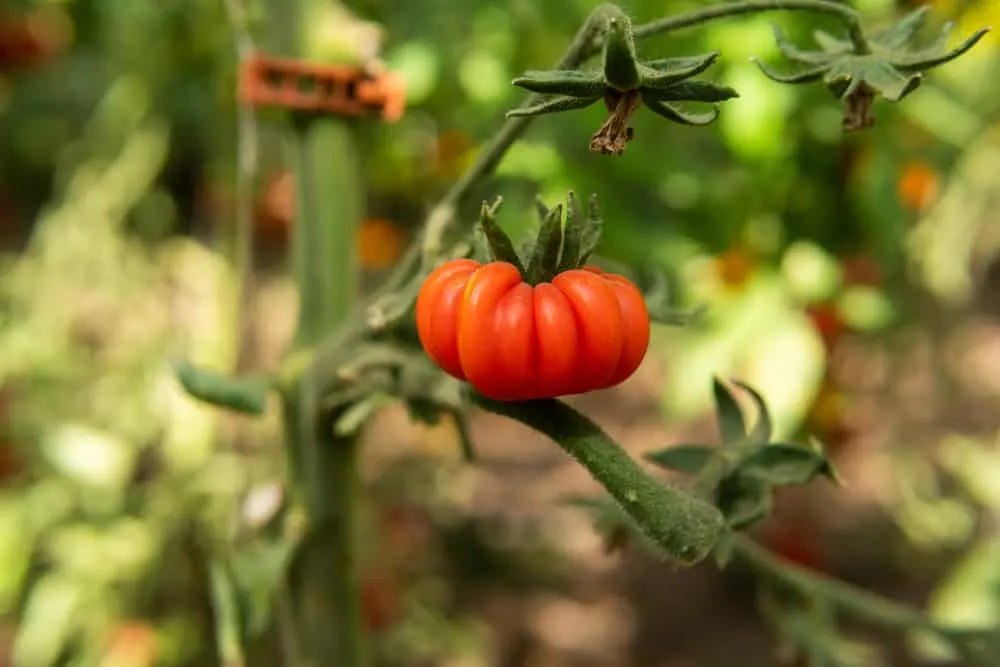
According to the Oxford Dictionary, heirloom is defined as:
“denoting a traditional variety of plant or breed of animal which is not associated with large-scale commercial agriculture.”
Like all definitions, this only tells part of the story. In fact, when it comes to the word ‘heirloom’ in gardening, the definition is not all that clear. It generally indicates the variety has been passed down from generation to generation, although the exact requirements are contested. Some say varieties shouldn’t have been crossbred for the past 40 years to be classified an heirloom. Others say 50, or beyond World War II.
What we do know, is that heirloom varieties have become incredibly popular. They vary widely in shape, texture, color, and size – sometimes wildly so – attracting attention from new and experienced gardeners alike. They are also favored for their supposedly superior taste.
What is a hybrid tomato?
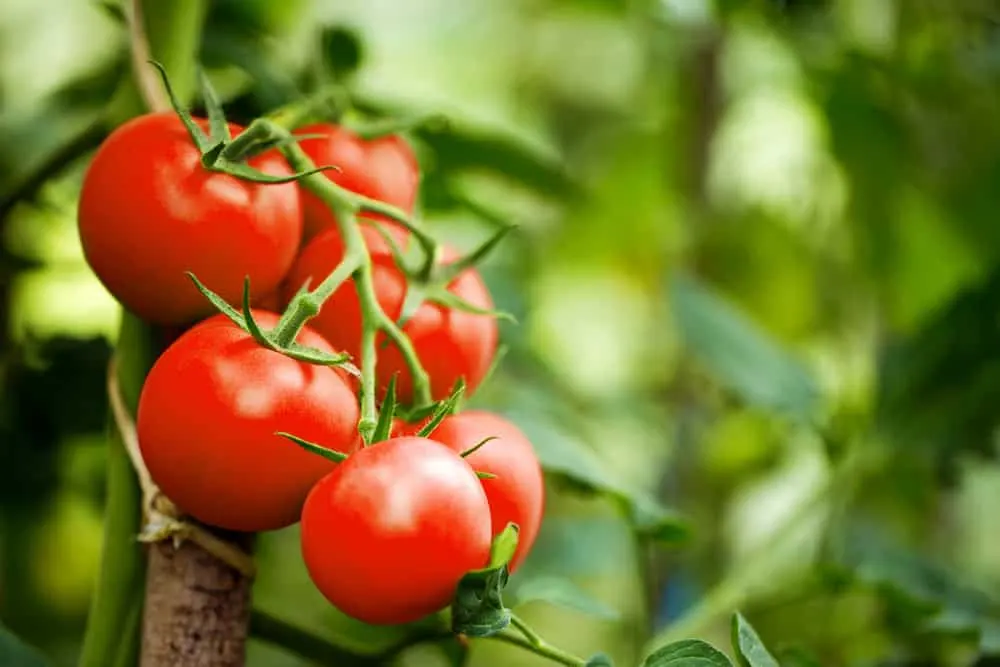
While heirloom tomatoes remain the same for many years, hybrids are cross-bred varieties. Many of these varieties are purposefully cross-pollinated to produce a variety that has the best characteristics of two or more individual plants.
Hybrid varieties are produced with a number of characteristics in mind – taste, resistance to disease, heat tolerance, and more. However, hybrids are typically associated with the supermarket tomato varieties that have been bred to last longer and produce thicker skin that can withstand damage from transportation.
The main distinction is breeding. Heirlooms have been around for many years and remained the same, while hybrids have been recently cross-bred for a particular purpose.
Which is better?
The battle between heirloom and hybrid tomato varieties is often a heated one. Deciding which is better is typically an impossible task with so many conflicting opinions. To understand which one is right for you, take a look at the pros and cons:
Heirloom pros
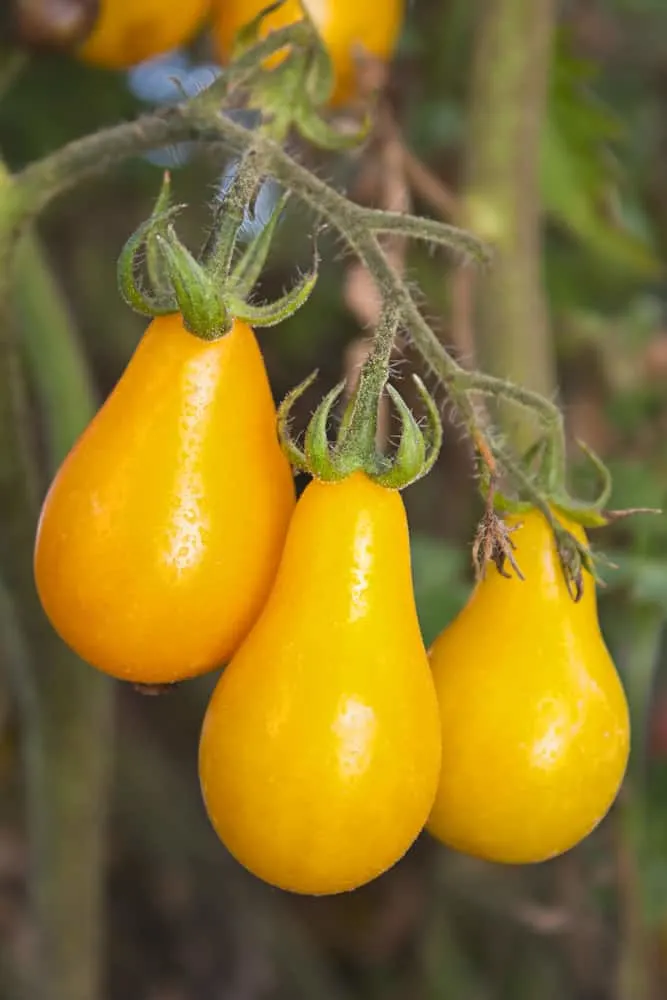
Flavor: It is generally argued that heirlooms are more flavourful than hybrid varieties. This is because they are largely grown and reproduced for their taste, making that the number one concern in planting. The depth of flavor in an heirloom tomato is said to be far greater than a standard grocery store tomato.
Variety: If you can imagine the strangest-looking tomato possible, there is likely an heirloom variety similar to your image. Heirloom tomatoes vary greatly in color, size, and texture – not only on the outside, but on the inside too.
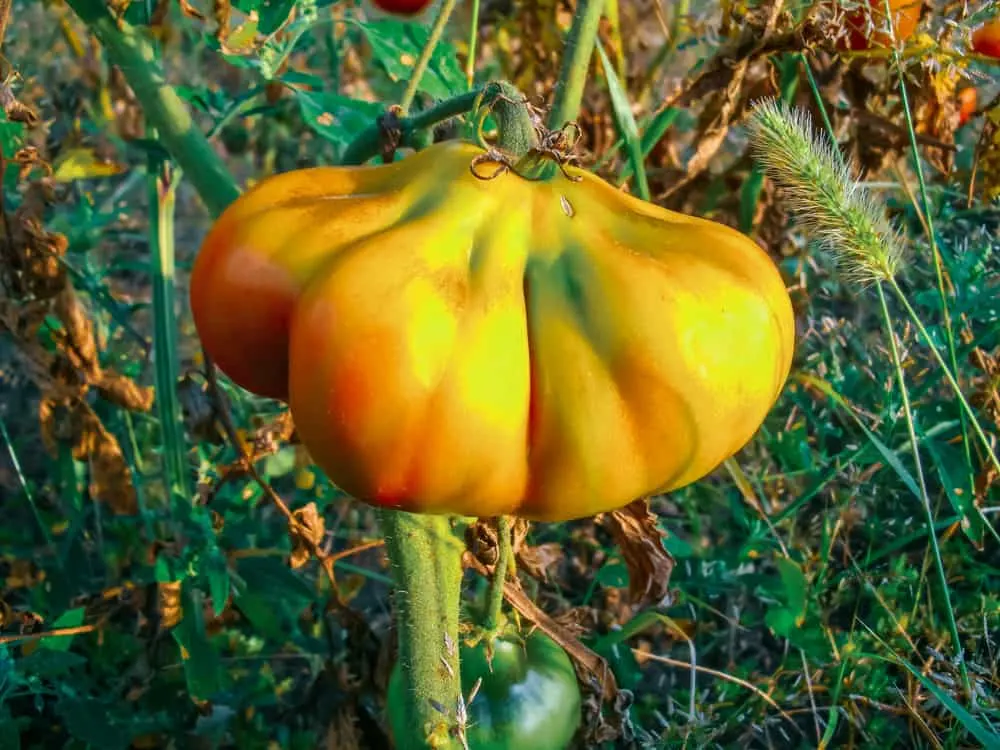
Tradition: Gardeners are often sticklers for tradition, and there is no greater tradition to continue than heirloom seeds. These varieties have been around for several years – for good reason – and their existence contributes to greater genetic diversity in tomato plants overall.
Replanting: Because heirloom seeds have remained the same, and have not been cross-bred, the seeds of the fruits can be reused season after season. With just one packet of heirloom tomato seeds, you can continue your tomato plant production year after year without spending another cent on seeds.
Heirloom cons
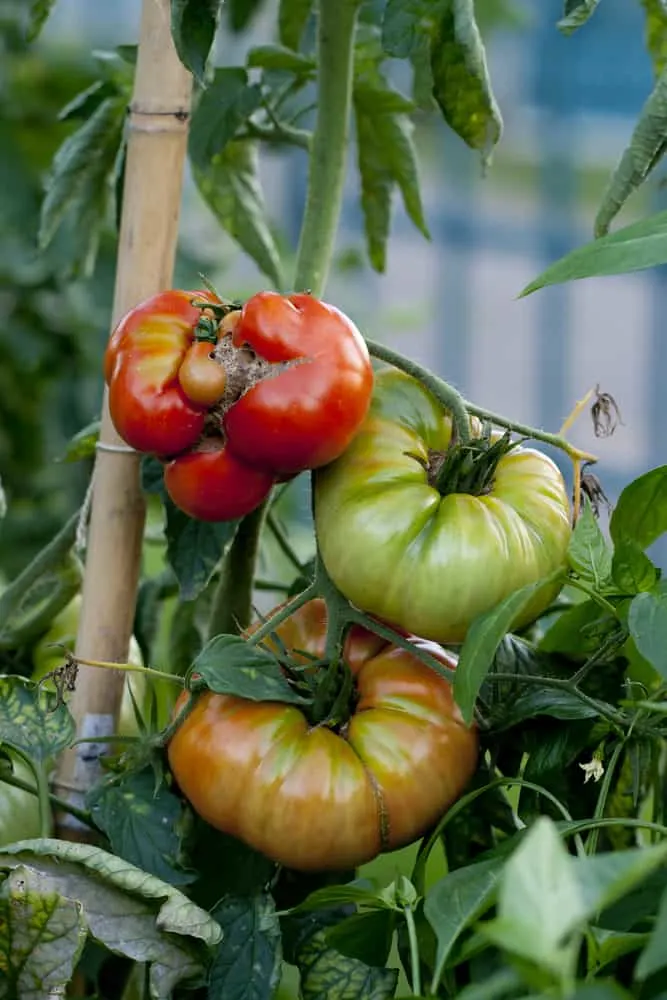
Unusual: While their strange looks may be a bonus to some, they are a turn-off for others. Some gardeners just want to grow the tomatoes they know and love – red, plump, and juicy. In this case, the heirloom varieties are probably not going to produce the desired results.
Yield: As hybrid varieties have been cross-bred for greater production and higher yield, the heirloom varieties may prove disappointing in comparison. This may not be a worry if you are planting several plants, but one lonely heirloom plant certainly won’t provide a sustainable harvest.
Hybrid pros
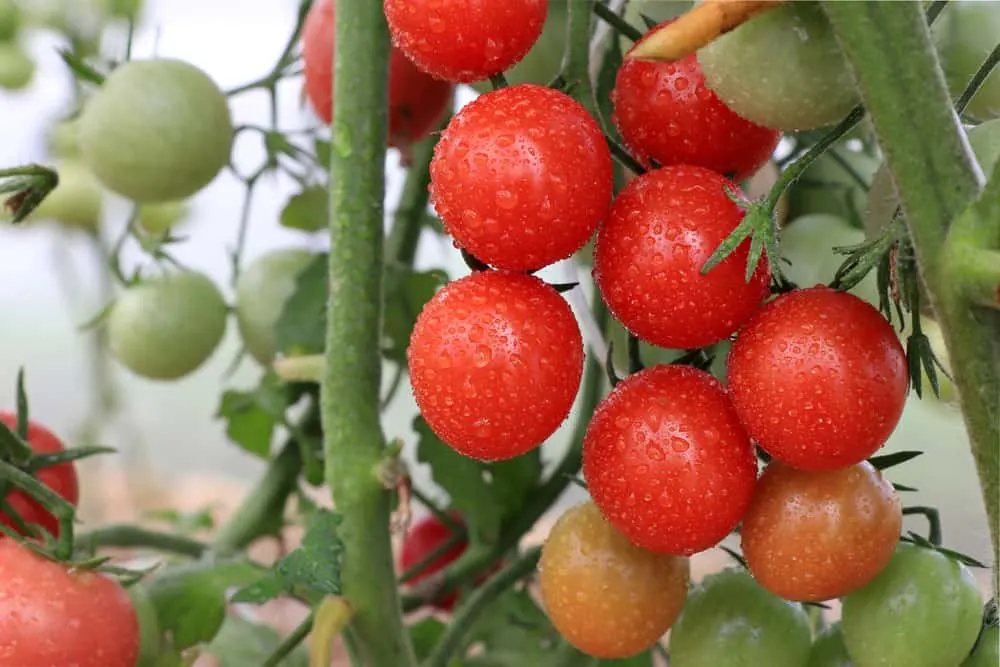
Growing conditions: The many hybrid varieties available have been produced for specific purposes to enable better production, like disease or heat resistance. Their greater tolerance to many growing conditions is ideal for gardeners who lack the exact conditions many heirloom tomato varieties need to thrive.
Yield: Hybrid varieties generally produce more fruits per tomato plant. Depending on the variety, they may also produce larger or fuller fruits than some of the heirloom varieties.
Consistency: When you grow a hybrid tomato from nursery-bought seeds, you can be sure of a consistent, dependable harvest of the same fruits. Heirloom varieties may produce inconsistent or blemished fruits, even on the same plant.
Stability: Hybrid varieties are designed to withstand a range of conditions and still produce a reliable harvest. They can manage harsh weather and ill-treatment far better than heirloom varieties can.
Hybrid cons
Replanting: The seeds from homegrown hybrid tomatoes cannot be replanted. As they have been cross-bred, the plants from the following season will be nothing like the parent plant and may produce undesirable fruit.
Flavor: The hybrid varieties that have been produced to deal with things like pest resistance, or firmness, or yield lose focus when it comes to taste. This is not true of all hybrid varieties, but in many taste is not the primary concern, whereas it is in heirloom tomatoes.
The verdict
So which is better?
If you’re looking for taste, or something unusual to add to your garden, heirlooms are your answer.
If you’re looking for a dependable crop that is easier to grow and care for, hybrids will do the job.
My answer, and the answer I suspect many avid tomato gardeners will opt for, is to grow both. This way, you truly get the best of both worlds, and an even larger harvest with a wide variety of tomatoes at the end of the season.
